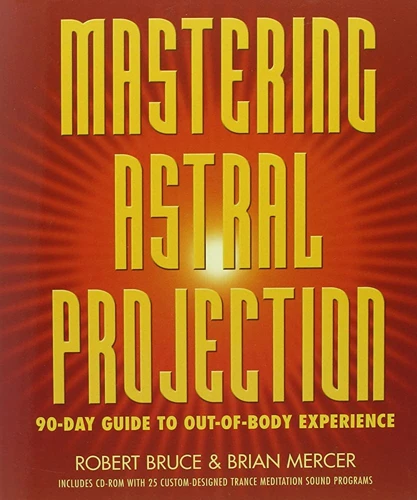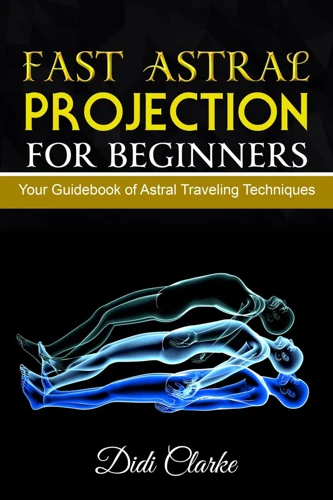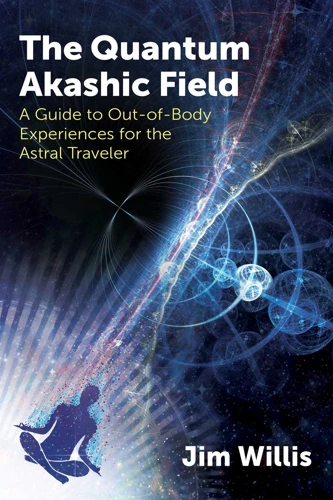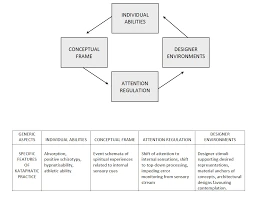Have you ever had a dream where you felt like you were floating outside of your body? What if that experience was not just a dream, but an actual spiritual practice known as astral projection? Astral projection, also known as out-of-body experience, is a controversial and mysterious phenomenon that has been reported throughout history and across cultures. It involves the experience of leaving one’s physical body and traveling in a parallel realm using only the power of the mind. While some view it as a purely psychological experience, others consider astral projection as a spiritual practice with unique benefits and potential risks. In this article, we will delve into the spiritual significance of astral projection, explore its role in religion, and examine various methods and precautions for those curious about incorporating it into their spiritual practice.
The Spiritual Significance of Astral Projection

The practice of astral projection has been deeply rooted in spirituality for centuries, with many religious and spiritual beliefs attaching significant importance to the experience. Exploring the spiritual aspects of astral projection can be both fascinating and perplexing as it takes us beyond the boundaries of our physical body and into the unknown realm of the astral plane. Through this practice, some believers aim to connect with higher beings, explore alternate realities or receive spiritual insights. In this section, we delve into the spiritual significance of astral projection, including its definition, roots in spirituality, and its purpose in religious contexts.
What is Astral Projection?
Astral projection, also known as out-of-body experience (OBE), is a phenomenon where an individual’s consciousness separates from their physical body, allowing them to travel outside of it to explore the astral realm. This is believed to occur during sleep, meditation, or through intentional practice.
The experience of astral projection varies from person to person. Some report feeling a sense of weightlessness, while others describe a pulling or vibrating sensation. The individual may also experience a spotlight effect, where their consciousness is focused on a single point, such as their forehead or the top of their head.
The astral realm or plane is said to be a non-physical realm that exists parallel to the physical world. It is often described as a world of energy or vibration and is thought to be populated by entities such as spirits or angels.
Astral projection can be viewed as a way to explore the spiritual aspects of the self, as it allows the individual to connect with the astral realm and experience it firsthand. It is also believed to have therapeutic benefits, offering a way to gain insight into one’s psyche and past experiences.
While it is still considered a controversial topic, many individuals and religious groups have long held beliefs in the existence and practice of astral projection. Its potential spiritual and healing benefits continue to draw interest and study in various communities.
The Spiritual Roots of Astral Projection
The roots of astral projection can be traced back to various spiritual traditions and beliefs. In ancient Egyptian religion, it was believed that after death, the soul would embark on a journey through various realms, including the astral realm. This journey was known as the “weighing of the heart” and was said to determine the fate of the soul in the afterlife.
Hinduism also has a long history of belief in astral projection. In this tradition, it is believed that the self (atman) is separate from the physical body and can travel through different realms and dimensions. This practice is known as “yoga nidra” or yogic sleep and is said to enhance spiritual growth and understanding.
In Taoism, astral projection is seen as a means of achieving immortality. The practice involves cultivating the ch’i energy within the body and using it to leave the physical body and travel through different realms.
Native American traditions also have beliefs in astral projection, with shamans using this practice to connect with ancestors and spiritual guides. It is seen as a way of accessing different realms and dimensions in order to gain insight and wisdom.
The spiritual roots of astral projection are diverse and varied. However, they all share a belief in the existence of multiple dimensions and realms beyond the physical plane, and the ability of the human soul to travel through them.
Using Astral Projection in a Religious Context
The practice of Astral Projection can be used in various religious contexts to attain spiritual enlightenment and explore the spiritual realm. There are various methods and techniques that can be used to achieve out-of-body experiences, and these practices are often combined with specific rituals and beliefs to align the experience with the tenets of different religions.
The table below outlines how Astral Projection is used in different religions:
| Religion | Purpose | Methodology |
|---|---|---|
| Hinduism | Exploring different planes of existence and connecting with higher beings like deities and the soul | Using mantras, meditation, pranayama or various yoga practices to achieve heightened states of consciousness and out-of-body experiences. |
| Buddhism | Finding liberation from suffering and reaching enlightenment | Using meditation techniques like Vipassana or samatha to achieve heightened states of consciousness and connect with the spiritual realm. |
| Christianity | Exploring the spiritual realm and communicating with divine beings | Prayer, fasting, and Bible study may be combined with meditation and visualization techniques to achieve out-of-body experiences that align with the Christian faith. |
| Islam | Connecting with Allah and in some cases, undertaking the Night Journey or Mi’raj (Prophet Muhammad’s ascent to heaven). | The use of vocals like zikr, meditation and visualization techniques to expand their consciousness and connect with the divine realm. |
| Native American Spirituality | Exploring one’s spiritual journey and gaining insight into it | The use of drumming, chanting, dancing or any natural psychedelic substances, to change one’s consciousness and achieve out-of-body experiences. |
Astral Projection can be used in a religious context as a means to enhance one’s spirituality and connect with the divine realm. However, it is essential to keep in mind that specific precautions and safety measures should be taken while practicing Astral Projection to ensure physical and psychological well-being.
Ancient and Modern Examples of Astral Projection in Religion

Throughout history and across cultures, there have been numerous accounts of individuals experiencing what is now commonly known as astral projection. Whether through religious practices, shamanic rituals, or spontaneous experiences, people have reported feeling a separation of their consciousness from their physical body and traveling to other planes of existence. The idea of an out-of-body experience where one’s soul or spirit leaves their physical body has fascinated scholars, religious leaders, and curious individuals for centuries. In this section, we will explore some examples of astral projection in religion, both in ancient times and in modern practices. From shamanic traditions to near-death experiences, the various ways in which astral projection has been used and understood in different cultures is nothing short of intriguing.
Ancient History
Throughout history, astral projection has been a concept that has fascinated many. Ancient cultures from around the world have records of this practice in their spiritual traditions. Let’s explore some examples:
| Egypt | Greece | India |
|---|---|---|
| In Ancient Egypt, it was believed that the soul could leave the body during sleep or death and journey through the afterlife. This is depicted in the Book of the Dead. | The philosopher Pythagoras taught his students to focus their minds to leave their bodies and travel to other realms. This practice was known as ekstasis. | The Hindu text, the Upanishads, describe prana, the vital breath or life force, leaving the body during sleep and returning upon waking. |
| Native American | Tibetan Buddhism | Aztec |
| Native American tribes have beliefs in shamanism, where a shaman can leave their body to communicate with spirits or travel to other worlds. | In Tibetan Buddhism, the practice of tulpa involves creating a thought-form that can leave the body and travel to other realms. | The Aztecs had a concept of nagualism, where a person could transform into an animal and travel through the spirit world. |
These ancient cultures recognized the power of astral projection for spiritual exploration and growth. It was believed that traveling outside the body provided a connection to higher realms and was a way to communicate with the divine. These beliefs and practices have influenced modern-day spirituality and the continued interest in astral projection.
Astral Projection in Modern Religion
Various modern religions have also incorporated astral projection as a form of spiritual practice. Let’s explore some of them in the table below:
| Religion | Astral Projection Practices |
|---|---|
| Christianity | Some Christian mystics have reported experiencing out-of-body experiences during prayer or contemplation. The Bible also mentions several instances of individuals having visions or being taken to other realms or dimensions, such as the case of the apostle Paul in the New Testament. |
| Buddhism | Buddhist practitioners may use various meditation techniques to induce astral projection, such as the “yoniso manasikara,” which involves reflecting on the nature of consciousness and the impermanence of all things. Tibetan Buddhism also has a practice called “dream yoga,” which involves training oneself to maintain awareness during dream and sleep states. |
| Hinduism | Astral projection has been a part of Hindu spiritual tradition for thousands of years. In the Bhagavad Gita, the god Krishna describes various yoga practices that can lead to spiritual liberation and astral travel. The Upanishads also mention the concept of “jiva,” or the individual soul, which is said to be able to leave the physical body and travel in the astral plane. |
| New Age Spirituality | New Age practitioners often use astral projection as a means of exploring other realms, connecting with spirit guides or higher beings, and accessing higher states of consciousness. Some use guided meditations or binaural beats to induce a trance-like state, while others practice lucid dreaming or automatic writing to access the astral plane. |
As we can see, the practice of astral projection has been incorporated into various spiritual traditions throughout history and continues to be an important aspect of modern religious practices.
Near-Death and Out-of-Body Experiences Across Religions
Many religions include beliefs in near-death experiences (NDEs) or out-of-body experiences (OBEs) as a way to connect with the divine. Such experiences are often profound, transformative, and can have a lasting impact on the individual.
In Christianity, many individuals report seeing a bright light, encountering angels or deceased loved ones, and experiencing a sense of peace and love during NDEs. These experiences are often interpreted as glimpses of heaven and can reinforce a person’s faith in the afterlife.
In Islam, NDEs are considered an opportunity for the soul to leave the body and experience the spiritual realm. Muslims who have experienced NDEs have reported seeing visions of paradise or hell and receiving messages from Allah or the Prophet Muhammad.
In Buddhism, OBEs are viewed as a natural part of meditation and spiritual practice. The ultimate goal is to achieve a state of enlightenment where the individual understands the interconnectedness of all things.
In Hinduism, the concept of the soul is central to beliefs around NDEs and OBEs. Hindus believe that the soul is eternal and that NDEs or OBEs can provide a glimpse into the ultimate reality of the universe.
In Native American religions, NDEs and OBEs are viewed as a way to connect with the spirit world and receive guidance from ancestors or spirit guides.
The spiritual significance of NDEs and OBEs varies across different religions and cultures. However, the common thread is the belief that these experiences can provide a deeper understanding of the nature of reality and the interconnectedness of all things.
Methods and Techniques for Astral Projection

For those seeking to explore astral projection as a religious practice, understanding the methods and techniques for achieving an out-of-body experience is essential. While there are various approaches to this practice, each with its own benefits and drawbacks, it is important to approach astral projection with caution and preparation. In this section, we will delve into several different methods for inducing astral projection, including meditation, binaural beats, lucid dreaming, and other practices. By exploring these techniques, you can find the approach that best suits your spiritual journey and helps awaken your connection to the divine.
Meditation
Meditation is one of the most well-known and widely practiced techniques for inducing astral projection. It involves clearing the mind of thoughts and entering a state of deep relaxation and focus. Here are some methods of meditation that can help with astral projection:
- Guided meditation: This type of meditation can be found in the form of audio files or guided sessions with a meditation teacher. It involves following verbal instructions to focus on specific mental images and feelings to achieve a state of relaxation and concentration that is conducive to astral projection.
- Chakra meditation: This type of meditation focuses on the energy centers, or chakras, within the body. By meditating on these centers and visualizing them opening and aligning, it is believed that one can achieve a heightened state of spiritual awareness that may lead to astral projection.
- Vipassana meditation: This is a form of Buddhist meditation that involves observing one’s thoughts and sensations without judgment or reaction. It teaches practitioners to develop a non-attached perspective to their thoughts and emotions, which can be helpful in quieting the mind for astral projection.
The key to successful astral projection through meditation is to find a method that works for you and to practice regularly. It may take some time and patience to quiet the mind and achieve a deep state of relaxation necessary for astral projection, but with consistent effort, it is possible.
Binaural Beats and Brainwave Entrainment
When it comes to inducing astral projection, one popular method is through the use of binaural beats and brainwave entrainment. Binaural beats involve playing two slightly different frequencies in each ear, which creates the perception of a third frequency in the brain. This third frequency is said to synchronize the brain’s hemispheres and promote relaxation and altered states of consciousness. Brainwave entrainment, on the other hand, involves playing specific frequencies that correspond to different brainwave states, such as alpha, theta, and delta. This can help guide the brain into the desired state for astral projection.
| Advantages | Disadvantages |
|---|---|
| Easy to use and widely accessible | May not work for everyone |
| Can enhance meditation and relaxation | Can cause discomfort or headaches in some individuals |
| Can be tailored to specific brainwave states for optimal results | May require headphones and a quiet environment |
While binaural beats and brainwave entrainment can be effective for inducing astral projection, it’s important to use caution and do your research before trying any specific frequencies or methods. Not everyone will have the same experience or response to these techniques, and they may not be suitable for individuals with certain medical conditions or sensitivities. Prioritizing safety and finding a qualified practitioner or resource can help ensure a positive and transformative experience with astral projection through binaural beats and brainwave entrainment.
Lucid Dreaming
One popular method for achieving astral projection is through lucid dreaming. This is the practice of becoming aware that you are dreaming while still within the dream itself. By achieving this state of consciousness, you can gain control over the dream and use it as a launchpad for astral travel.
There are several techniques that can help with achieving lucid dreaming. One is to keep a dream journal, where you write down your dreams immediately upon waking up. This helps with dream recall and can aid in recognizing when you are dreaming.
Another technique is to perform reality checks throughout the day, asking yourself whether you are dreaming or not. This habit can carry over into your dreams, making it more likely that you will recognize the dream state.
Once you have achieved lucid dreaming, there are several ways to use it for astral projection. One is to visualize yourself leaving your physical body and moving through space while still in the dream. Another is to find an object in the dream and focus on that object as a way to “anchor” yourself and prevent yourself from getting lost.
It should be noted that while lucid dreaming can be a powerful tool for astral projection, it is not without risks. It is important to approach lucid dreaming with caution and be aware of the potential for getting lost in the dream or becoming stuck in a nightmare. It is also important to have a strong foundation in meditation and other spiritual practices before attempting astral projection through lucid dreaming.
Other Practices for Astral Projection
One of the most popular and effective methods for achieving astral projection is through various practices and techniques. While meditation, binaural beats, and lucid dreaming are the most commonly recommended methods for achieving an out-of-body experience, there are also a number of other practices that can be used as effective tools for exploring the astral realm.
Affirmations: Positive affirmations can help you stay focused and motivated during your astral projection practice. Simply repeating a phrase to yourself, such as “I am capable of achieving astral projection,” can help you overcome any doubts or fears that may be holding you back from entering a state of deep relaxation.
Visualization: Visualization is a powerful tool for preparing the mind and body for astral projection. By visualizing yourself leaving your physical body and exploring the astral realm, you can help your mind become more familiar with the process of astral projection and increase your chances for success.
Aromatherapy: Certain scents, such as lavender, frankincense, and sandalwood, are believed to have calming and relaxing effects on the mind and body, making them useful tools for achieving a state of deep relaxation and preparing for astral projection.
Candle Gazing: Focusing on a flickering candle flame can help quiet the mind and promote relaxation, making it a popular technique for preparing for astral projection.
Spiritual Tools: Many people find that incorporating spiritual tools, such as crystals or tarot cards, can help them achieve a deeper state of relaxation and connect with their spiritual guides or higher self.
While these practices may have varying degrees of effectiveness for each individual, they provide a range of different tools and techniques for exploring the astral realm and achieving an out-of-body experience.
Safety and Precautions for Astral Projection

As with any spiritual or physical practice, it is important to approach astral projection with caution and a mindset of responsibility. While the concept of leaving one’s physical body and exploring different realms of existence can be alluring, it is important to take measures to ensure both physical and psychological safety. In this section, we will explore some best practices and precautions for engaging in astral projection, including measures to protect the body and mind, as well as preparations for successful and safe journeys beyond the physical realm.
Physical Safety
Ensuring physical safety is crucial when practicing astral projection. Here are some important guidelines to follow:
- Choose a comfortable and safe environment: Make sure you choose a quiet, peaceful setting that is free from distractions and potential hazards. Your physical body will be in a vulnerable state during the astral projection experience, so it’s important that you feel secure and comfortable in your surroundings.
- Prepare your body: Before attempting astral projection, make sure you are well-rested and properly nourished. Avoid any substances that can negatively impact your physical health, such as drugs, alcohol, or caffeine.
- Release tension: It’s important to release any tension or stress in your body before attempting astral projection. Practice relaxation techniques, such as deep breathing or yoga, to help calm your mind and body.
- Protect your physical body: While your astral body is away, your physical body is still vulnerable. Make sure you are in a safe, protected space and that no one will disturb you during your astral projection experience. You may also want to set an alarm to ensure you return to your physical body at the appropriate time.
- Return gently: When returning to your physical body after an astral projection experience, do not rush or force your way back. Take your time and allow your body to adjust slowly. If you return too quickly, you may experience physical disorientation or disconnection from your physical body.
By following these physical safety guidelines, you can help ensure a safe and positive astral projection experience. Remember to always listen to your body and respect its limits. If at any time during the experience you feel uncomfortable or uneasy, return to your physical body immediately.
Psychological Safety and Preparation
When it comes to practicing astral projection, it’s important to consider not just physical safety, but also psychological safety and preparation. Here are some tips to ensure a safe and positive experience:
1. Set an intention: Before attempting astral projection, it’s important to set a clear intention for your experience. This can help guide your focus and ensure that you have a positive, fulfilling experience.
2. Learn relaxation techniques: Being in a relaxed, peaceful state is key to successfully astral projecting. Spend time practicing relaxation techniques such as deep breathing, mindfulness, or progressive muscle relaxation.
3. Address any fears or anxieties: If you have any underlying fears or anxieties about astral projection, it’s important to address them before attempting the practice. Talk to a therapist or mentor who can help you work through any emotional blocks.
4. Practice grounding techniques: After astral projecting, it’s important to take time to ground yourself back in your physical body. Practice techniques such as holding onto a loved one, taking a warm bath, or spending time in nature.
5. Take breaks: Don’t push yourself too hard when practicing astral projection. Take breaks as needed, and honor your body’s limits.
By taking these psychological safety precautions, you can ensure that your astral projection experiences are positive, fulfilling, and spiritually enriching.
Benefits of Astral Projection

Exploring the realm of astral projection can offer a multitude of benefits, both spiritually and personally. This practice of separating one’s consciousness from the physical body has intrigued many individuals for centuries. Through the experience of astral projection, one can enhance their spirituality and connection to the divine, explore their own consciousness and subconscious mind, and even experience healing and therapeutic benefits. In this section, we will dive into some of the potential benefits of astral projection and how it can positively impact our lives.
Enhancing Spirituality and Connection to the Divine
Astral projection is often considered a powerful tool for enhancing spirituality, and deepening one’s connection to the divine. Through the experience of leaving the physical body and soaring into the spiritual realms, practitioners can gain insights and perspectives that are not available in their everyday lives.
Astral Projection and Spiritual Growth: Astral projection can be a way to explore spiritual realms that are not accessible through physical means, and to connect with higher dimensions of consciousness. This can lead to a deeper understanding of the interconnectedness of all things, and a greater sense of oneness with the universe.
Connecting with Spirit Guides: One of the many benefits of astral projection is the ability to communicate with spiritual guides, helpers, and beings that can offer guidance and support on one’s spiritual journey. These guides may appear as beings of light, animals, or other forms, and can offer profound wisdom and insight.
Receiving Divine Guidance: Astral projection can also be a means of receiving messages from the divine, whether it be through direct communication with a higher power, or through the experiences and encounters one has in the astral realm.
Deepening Connection to Nature and the Universe: Through astral projection, practitioners can experience a sense of unity and harmony with the natural world and the universe as a whole. This can lead to a greater appreciation of the beauty and complexity of the world around us.
Cleansing and Rebalancing: Astral projection can also be used as a means of clearing negative energies and blockages from the body and mind, and restoring balance and harmony to one’s spiritual and energetic systems.
Astral projection can be a powerful tool for enhancing spirituality and connection to the divine. Whether used as a means of exploring the cosmos, seeking guidance and wisdom, or for personal growth and healing, the benefits of astral projection are profound and far-reaching.
Personal Growth and Self-Discovery
Astral Projection has been utilized as a tool for personal growth and self-discovery by individuals in various religious and spiritual practices. This spiritual practice allows individuals to explore their inner selves and connect with higher states of consciousness.
Self-awareness is one of the most significant aspects of personal development that can be achieved through Astral Projection. By separating the consciousness from the physical body, an individual gains a unique perspective and can observe themselves objectively. This leads to increased self-awareness and can reveal things about themselves that may have been previously unknown or unconscious.
Astral Projection can help individuals to overcome fears, phobias, and other emotional or mental roadblocks that may be holding them back in their daily lives. By facing their fears in a safe and controlled environment, individuals can better understand and overcome them, leading to significant personal growth.
Astral Projection can lead to creative and spiritual inspiration. During out-of-body experiences, individuals may encounter higher beings, visit other realms or receive messages from the universe. These experiences can open up new channels of creativity, offer new perspectives on spirituality and provide a deeper understanding of the self.
By helping individuals to quiet the mind and connect with their inner selves, Astral Projection can also be used as a method for deep relaxation and stress relief. It provides an opportunity to escape the stresses of daily life and enter a state of peacefulness and tranquility. This can lead to a more centered and grounded state of being, with the ability to better manage stress and anxiety.
Astral Projection has much to offer in terms of personal growth and self-discovery. By exploring the inner self and connecting with higher states of consciousness, individuals can expand their awareness and gain a deeper understanding of themselves and the world around them.
Healing and Therapeutic Benefits
According to practitioners of astral projection, there are numerous healing and therapeutic benefits to be gained from the practice. Here are some of the most common benefits:
- Reduced Stress: One of the most significant benefits of astral projection is its ability to reduce stress. By entering a state of deep relaxation, it is possible to release tension and anxiety, which can have a profound impact on both mind and body.
- Improved Sleep: People who struggle with insomnia or other sleep disorders often find that astral projection can help them get a better night’s sleep. By practicing astral projection before bed, it is possible to calm the mind and body, making it easier to fall asleep and stay asleep throughout the night.
- Accelerated Healing: Practitioners of astral projection believe that the practice can help accelerate the body’s natural healing processes. By entering a state of deep relaxation, the body is better able to focus its resources on repairing damaged tissues and fighting off infections.
- Enhanced Creativity: Many people who practice astral projection report that they experience a significant boost in creativity and inspiration. By tapping into the subconscious mind, it is possible to access new ideas and insights that can enhance artistic expression and problem-solving abilities.
- Spiritual Purification: For many people, astral projection is a way to purify the soul and access a deeper level of spiritual awareness. By transcending the limitations of the physical body, it is possible to connect with higher realms of consciousness and gain a greater understanding of the mysteries of the universe.
Of course, it is important to note that the healing and therapeutic benefits of astral projection are largely subjective and can vary from individual to individual. It is always important to approach the practice with an open mind and to be mindful of any discomfort or negative reactions that may occur. With proper preparation and guidance, however, astral projection can be a powerful tool for promoting physical, mental, and spiritual well-being.
How to Incorporate Astral Projection into Your Spiritual Practice
Incorporating astral projection into your spiritual practice is a personal journey that requires patience, dedication, and respect for the practice. Here are some steps and considerations to help you get started:
Step 1: Set your intention and create a safe space
Before attempting astral projection, it is important to set a clear intention for your practice. Ask yourself why you want to do it and what you hope to achieve. This will help you focus your energy and stay committed to the practice. It is also essential to create a safe and comfortable space for your practice, free from distractions or interruptions.
Step 2: Choose a method that works for you
There are several techniques and methods for inducing an astral projection experience. Experiment with different approaches and find the one that resonates with you. Some prefer meditation or lucid dreaming techniques, while others use binaural beats or other sound-based therapies.
Step 3: Practice consistently and with patience
Astral projection is not an easy practice, and it requires patience and consistency. Start with short practice sessions and gradually increase your time as you become more comfortable with the practice. The most important thing is to remain patient and compassionate with yourself throughout your journey.
Step 4: Record your experiences
Keeping a journal or record of your astral projection experiences can help you track your progress, identify patterns and insights, and reflect on your spiritual journey.
Step 5: Seek guidance and support
Finding a community of like-minded individuals or seeking guidance from a spiritual teacher can be helpful in your astral projection practice. Having a support system can help you stay accountable, offer helpful tips and insights, and provide inspiration when you need it.
Incorporating astral projection into your spiritual practice may not be for everyone, and it is important to honor your own intuition and inner guidance. Remember that it is a personal journey, and the ultimate goal is to deepen your connection to the divine and cultivate inner peace and spiritual growth.
Conclusion
After exploring the spiritual aspects and practices of astral projection, it is clear that this phenomenon holds immense significance in various religious and spiritual traditions. Astral projection can be a powerful tool for enhancing one’s spirituality, personal growth, and wellbeing.
However, it is important to approach astral projection with caution and mindfulness. Safety measures and psychological preparation should be taken to ensure a positive and safe experience. It is also important to note that astral projection should not be used as a substitute for seeking professional help for mental or physical health issues.
Incorporating astral projection into one’s spiritual practice can bring about profound spiritual and personal benefits. Techniques such as meditation, binaural beats, and lucid dreaming can be practiced to facilitate the experience. It is important to approach astral projection with a humble and open mindset, and to seek guidance and support from experienced practitioners or spiritual leaders.
In conclusion, astral projection is a fascinating and transformative practice that has been utilized for millennia in various religious and spiritual traditions. With proper safety measures and preparation, it can offer immense benefits for personal growth and spiritual connection. However, it is important to approach it with the appropriate mindset and guidance, and to always prioritize safety and wellbeing.
Frequently Asked Questions
What are the benefits of practicing astral projection?
Astral projection can enhance spirituality, promote personal growth and self-discovery, and offer healing and therapeutic benefits.
Is astral projection safe?
As with any spiritual or psychological practice, it is important to take safety precautions and approach with care. Physical safety measures and psychological preparation can reduce the risks associated with astral projection.
What techniques can be used for astral projection?
Some common techniques include meditation, binaural beats, brainwave entrainment, and lucid dreaming.
Can religious beliefs influence the experience of astral projection?
Yes, religious or spiritual beliefs can shape the interpretation and experience of astral projection. Some religions may view astral projection as a means of connecting with the divine or spiritual realm.
Can astral projection be used as a religious practice?
Astral projection has been used in various religious traditions throughout history, often as a tool for spiritual connection or communication with deities or spiritual entities.
What is the spiritual significance of astral projection?
Astral projection can offer a deeper connection to spirituality and the divine, as well as aid in personal growth and self-discovery.
What are some historical examples of astral projection in religion?
Historical examples include the concept of the ka in ancient Egyptian religion and the practice of shamanic journeying in various indigenous cultures.
How can astral projection offer healing and therapeutic benefits?
Astral projection can provide a sense of inner peace and offer insights into one’s subconscious, potentially aiding in the healing of physical and emotional trauma.
Can anyone learn to astral project?
With practice and patience, most individuals can learn to astral project. It may require different techniques or methods for each person.
How can one safely incorporate astral projection into their spiritual practice?
It is important to approach astral projection with care, taking safety precautions and preparing oneself mentally and physically. One can also consult with a experienced practitioner or teacher for guidance.








